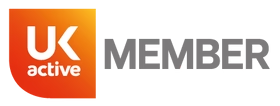Leg Machines at the Gym – Why You Should Not Skip Leg Day
Skipping leg day is one of the most common mistakes in the gym. Many people focus on upper-body workouts, neglecting their legs, which can lead to muscle imbalances, weaker performance, and an incomplete physique.
Leg training isn’t just about aesthetics—it’s essential for strength, mobility, balance, and injury prevention. Using leg machines at the gym can help you target key muscle groups effectively while reducing strain on your joints.
Let’s talk about why leg day is important, the best leg machines to use, and how often you should train your lower body.

Why You Should Never Skip Leg Day
Leg training goes beyond just building big quads—it impacts your overall strength, athletic performance, and even fat loss. Here’s why leg day should never be overlooked:
It Gives You Full-Body Strength & Performance
- Your legs support everyday movements like walking, running, and lifting.
- Strong legs enhance athletic performance in sports, weightlifting, and daily activities.
- Lower body strength improves compound lifts like deadlifts and squats.
Pro Tip: Even if your goal is an upper-body aesthetic, skipping leg day can limit your overall strength and progress in the gym.
It Prevents Muscle Imbalances
- A strong lower body ensures balanced muscle development between your upper and lower halves.
- Weak legs can cause instability, affecting your posture and increasing injury risk.
- Training legs improves core strength, which helps with balance and coordination.
Did You Know? Studies show that weak leg muscles contribute to lower back pain , that means leg training is crucial for injury prevention.
It Boosts Your Fat Loss & Metabolism
-
Leg workouts burn more calories because they engage large muscle groups.
- Training legs increases post-exercise oxygen consumption (EPOC), meaning you burn calories even after your workout.
- Building lean muscle mass in the legs helps boost your resting metabolism, aiding long-term fat loss.
Best Leg Machines at the Gym & How to Use Them
Leg machines allow for targeted muscle activation while minimising joint stress. Here are some of the best leg machines at the gym and how to use them effectively:
Leg Press Machine
The leg press machine is a powerful tool for building lower body strength without the balance challenges of free-weight squats. It allows you to lift heavier loads safely, making it ideal for both beginners and experienced lifters. By adjusting foot placement, you can target different muscle groups, helping to develop stronger quads, hamstrings, and glutes while minimising stress on the lower back.
- Targets: Quadriceps, hamstrings, glutes
- Benefits: Supports heavy lifting, safer than free-weight squats
- How to Use: Keep your feet hip-width apart, lower the weight slowly, and avoid locking out your knees.
Leg Extension Machine
The leg extension machine is one of the best ways to isolate and strengthen the quadriceps. Unlike compound leg exercises, this machine focuses solely on the front of the thighs, helping to improve muscle definition, endurance, and knee stability. It’s a great addition to any leg day routine, whether you're aiming to build strength, enhance athletic performance, or support knee rehabilitation.
- Targets: Quadriceps
- Benefits : Isolates the quads for muscle definition and strength
- How to Use: Adjust the seat for proper knee alignment, extend your legs fully, and control the movement on the way down.
Seated Leg Curl Machine
The seated leg curl machine is an essential tool for building hamstring strength and stability, which is crucial for knee health, athletic performance, and injury prevention. By isolating the back of the thighs, this machine helps improve leg power, flexibility, and balance, making it a great addition to both strength training and rehabilitation programmes. Proper form is key—focus on controlled movements to maximise muscle activation and avoid strain.
- Targets: Hamstrings
- Benefits: Builds hamstring strength and stability, preventing knee injuries
- How to Use: Sit with your back against the pad, pull your heels towards your glutes, and squeeze at the bottom.
Calf Raise Machine
The calf raise machine is a must-have for developing lower leg strength and ankle stability . Strong calves improve balance, support explosive movements, and reduce injury risk, making this exercise beneficial for athletes and gym-goers alike. By pressing through the balls of your feet and controlling each rep, you can maximise muscle engagement and build well-defined calves.
- Targets: Calves
- Benefits: Improves ankle stability and lower leg strength
- How to Use: Press through the balls of your feet, pause at the top, and control the lowering phase.
Pro Tip: Combine machine exercises with free-weight movements like squats and lunges for optimal leg development.

How Often Should You Train Your Legs?
There are many differing opinions on how often you should train legs for optimal growth.
- Beginner – Train legs 1-2 times per week (focus on basic machines and bodyweight movements).
- Intermediate – Train legs 2-3 times per week (include free weights and progressive overload).
-
Advanced – Train legs 3-4 times per week (split workouts between quads, hamstrings, and glutes).
Pro Tip: Give your muscles at least 48 hours to recover between intense leg sessions to prevent overtraining and maximise growth.
While the guidelines above provide a general starting point, everyone’s body responds differently to training. It’s important to do your own research, listen to your body, and consult with a qualified fitness professional to develop a routine that aligns with your specific goals, experience level, and recovery needs.
If you’re passionate about fitness and want to help others train safely and effectively, why not become a personal trainer yourself? Active IQ Level 3 Certificate in Personal Training is the essential first step. This qualification provides the fundamental knowledge and practical skills needed to train clients effectively, design personalised fitness programmes, and begin working as a certified personal trainer.

For example, as a personal trainer, one of your key roles would be guiding your clients through effective leg workouts while ensuring proper form, safety, and progression.
Many gym-goers, especially beginners, struggle with leg machines, either using them incorrectly or avoiding them altogether. Your job would be to educate, motivate, and help them build lower-body strength with confidence.
Here’s what that would look like in practice:
-
Assess Client Needs & Goals – Every client is different. Some may want stronger legs for sports, while others are focused on weight loss, injury recovery, or muscle definition. As a trainer, you’ll learn how to choose the right leg machines based on their goals.
-
Teach Proper Machine Setup – Many gym injuries come from poor machine adjustments. You’ll guide clients on seat positioning, knee alignment, and weight selection to ensure they train safely and effectively.
-
Explain the Benefits of Each Machine – Some clients may question why they should use leg machines instead of free weights. As a trainer, you’ll help them understand that machines like the leg press, leg extension, and hamstring curl allow for isolated muscle activation, controlled movement, and reduced injury risk—perfect for both beginners and advanced lifters.
-
Correct Common Mistakes – Clients often rush through reps, overload the weight, or use improper form. A good trainer provides real-time feedback, making adjustments to maximise results while preventing injuries.
- Progressive Overload & Workout Planning – You won’t just have clients repeat the same workout—you’ll design progressive plans that increase resistance, incorporate supersets, or introduce new leg machines over time. This ensures continued muscle growth and strength development.
In Summary—Never Skip Leg Day!
As you can see, leg day is essential for building strength, improving balance, and boosting metabolism. Incorporating leg machines at the gym into your routine is a great way to easily target key muscles safely and effectively.
Ready to take your training to the next level? Gain expert knowledge with the Active IQ Level 3 Certificate in Personal Training and help others achieve their fitness goals!

FAQs: Leg Day & Gym Machines
Q: Is it okay to only use leg machines for training?
A: Yes! Leg machines effectively isolate muscles, making them a great option for beginners and injury recovery. However, combining machines with free weights provides the best results.
Q: How heavy should I go on leg machines?
A: Start with a moderate weight that allows for 8-12 controlled reps. Increase weight gradually while maintaining proper form.
Q: Should I do leg machines before or after free weight exercises?
A: It depends on your training goals! If you’re focusing on strength and power, it’s best to start with free weight exercises like squats or deadlifts while your muscles are fresh. However, if you want to pre-exhaust specific muscles or train in a more controlled manner, you can begin with leg machines before moving to free weights. Experiment with both approaches to see what works best for you!
Q: Can I train legs every day?
A: No—your leg muscles need time to recover. Training them 2-3 times per week is more than enough for growth and strength.
Q: What’s the best leg exercise for fat loss?
A: Leg presses, lunges, and squats burn the most calories by engaging multiple muscle groups.
Want to learn more about effective training techniques? Check out 10 of the Best Weight Training Exercises for Beginners for expert guidance!







